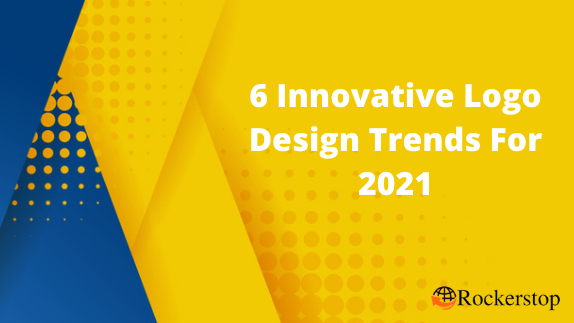Innovative Logo Design Trends
Last year wasn’t the simplest year and it’s been challenging for everybody. But After ideal start to the new decade it’s already screaming for a rebrand itself. In this article we discuss the highest 20 Logo Design Trends For 2021. We have been analyzing logo design trends from designers. We’ve interrogated from around the world and popular platform logo designers display their work.
We polled our community of logo designers from round the world, and their predictions represent the shifting climate of the planning landscape. While last year’s trends were focused on reinvention through new technologies, a standard theme in 2021’s logo trends appear to be innovation within constraints. The last year may have constrained the earth during a variety of ways , but the brand designers of 2021 are pressing on regardless.
1. Simplistic Geometry
Shapes are the building blocks of imagery. But while ancient shapes like triangles, squares and circles are often phased out once they have laid the groundwork, there’s potential in their pure simplicity.
The designers of 2021 are taking benefits of this power with logos design out of straightforward lines and shapes. An added feature of this approach is that straightforward layering can create an illusion of structure and depth, a nod to the attitude drawing trend we noted earlier. Through pure shape language, designers are ready to create logos that are easy to parse, memorable and joyously bright with colour all at an equivalent time.
2. 3D and Isometric Logo Designs
2021 is going to be a 3D bonanza within the world of design. A perfect thanks to add depth to your logo, and thus depth to your business. If you’ve already got a logo, adding shading, highlights and shadows can modify it instantly into a contemporary leading-edge design without losing the essence you’ve spent years getting into the public’s mind. If you’re trying to find a completely new design this is often a logo design trend that’s bound to tick all the creative boxes. So much variety, such a lot of variation, numerous great logo designs.
3. Inventive Typography
If you’ve got a text-based logo, be happy to use creative typography solutions to stress your company’s personality. A custom, original font has the facility to completely transform even the foremost obscure logo. As for your audience, they’re going to surely appreciate your inventive typography! Instead of revamping your old font, it might be easier to craft a replacement one from scratch. All you need is your imagination! Think about what typography can capture the essence of your brand within the most precise way. At an equivalent time, remember that your logo must stay legible and straightforward to perceive.
4. Divergent Letters
Wordmarks—logos that are based on all sides of a typeface—have a reputation as straightforward, for good or worse. While they create the name the whole focus of the brand, and thus more memorable, they do not leave much room for creative license. But the brand designers of 2021 are converting that impression one letter at a time.
Specifically, we are seeing more and more exaggerations of 1 letter within a wordmark. This can be as subtle as an off-coloured title over a lowercase ‘i’ or as noticeable as towering chopsticks forming an uppercase ‘H.’ The divergent letter not only creates a point of interest to draw the eye , it gives brands the only of both worlds: a typical , type-based logo that also isn’t afraid to interrupt the principles.
5. Wordmark Logo Design
Wordmark is the design concept of using only your name within the logo but using their own stylized font. Font design is huge news and always forces the boundaries. Combining your brand with this design concept in 2021 goes to be a logo design trend that you simply will see time and time again. Why? Because a well-designed wordmark does the work, surely, concisely and with minimum confusion, it is often used everywhere and on anything and ultimately is remarkably recognizable. And cool, let’s not forget to say, doing the work is one thing, doing the work whilst dripping with cool is even better.
The 2021 logo design trends are a chance to rebrand this young decade. And with trends that particularly strengthen minimalism and classical compositions, from perspective techniques to simple shapes to symmetry, the logos of our future seem to be striving for a kind of purity. Whether or not this enthusiasm holds strong may depend upon the remainder of the planet the maximum amount because it does these logo designers.
6. Gradients in Logo Design
Like 3D, gradient colouring adds a depth and appreciable quality to your logo design, immediately creating interest and dynamic quality. Small details matter and your brand colours do have an impression.
Gradients seem to possess an inextinguishable potential, and that we couldn’t be happier about that! Basically, a gradient is when the reminder an equivalent colour transitions smoothly into each other. This is how you make a “breathing” 3D image that sticks out through its dynamics and energy. Design tip: confirm all colour shades in your logo render well in print.
7. Monograms
Monograms are back, but this point designers tend to reinforce this strong technique with negative space, stacked elements, and bold geometry. With such amazing methods in your arsenal, you’ve got all the probabilities to craft a real masterpiece!
This design trend allows you to stay the main target on the colour. Hold the viewer, be due one element to a different but all the time retain the called-for instantly recognizable quality that each one the simplest logos have. Go with the flow into this good-quality group of gradient attention grabbers.
